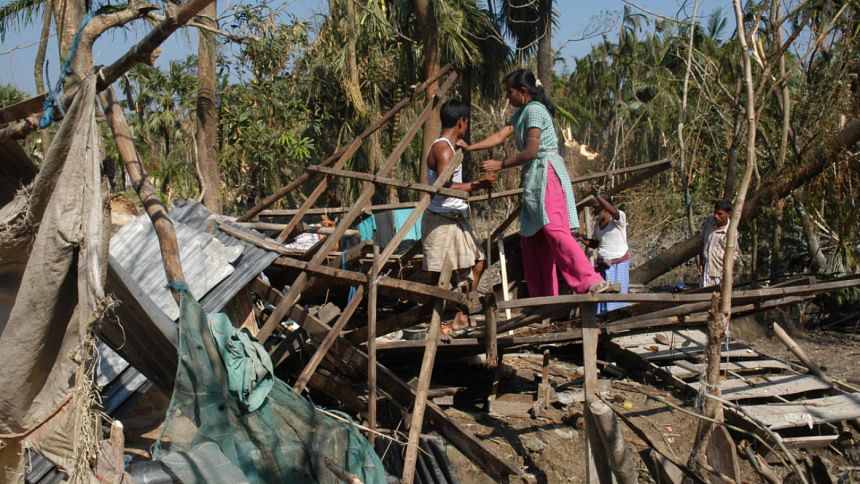Preventing the Worst of Disasters

The theme of this year's World Population Day, is 'Vulnerable Populations in Emergencies', a topic with special resonance in the Asia Pacific context, as it is home to more than 80% of the world's disasters (UNFPA 2014). Of countries in the South Asian context, the geographical setting of Bangladesh; with mountains bordering much of the country, extensive network of rivers/waterways and the Bay of Bengal to the South, increases the country's vulnerability to major natural disasters. Ranging from floods to drought and cyclones to riverbank erosion, every year Bangladesh experiences some form of natural disaster which affects the lives of its people living in different parts of the country.
Who Are The Most Vulnerable?
When a disaster strikes anywhere in the world women, children and young people account for more than 75 percent of refugees and displaced persons. During crisis situations girls and women face much greater risk of abuse, sexual exploitation, violence, forced marriage, reproductive health-related illnesses and death. Gender-Based Violence (GBV) is a serious threat in an emergency setting. The breakdown of social structures in the aftermath following a disaster can create an environment where women are more vulnerable to GBV. It is documented that the vulnerabilities of girls and women increase due to lack of protection and an absence of deliberate programmes to address their needs during emergencies. As women have only restricted decision making power and mobility they are also more at risk of injury or death during cyclones and floods. A report by the Global Humanitarian Forum in 2009 provided evidence that 90 percent of the deaths in the cyclone that hit Bangladesh in 1991 were women. Much has changed since then in the physical shelters to meet the needs of women. However some of the societal norms that govern power relations in the homes remain the same. Women continue to face acute care burdens and responsibilities for their family and community but hold limited social and legal status. This leads to less access to capital, social goods and other legal means to protect themselves when a crisis arises.
SRHR information and services
Adolescents and youth find themselves in a similar situation during and after disasters. Their specific needs and vulnerabilities are also often overlooked. A study conducted in Bangladesh by Plan International in 2012 clearly identifies the gaps in disaster response services provided to adolescents and youth, especially in terms of access to Sexual and Reproductive Health Services and Rights (SRHR) and safety and security. Respondents in the study mentioned difficulties in accessing SRHR information and services, reproductive tract infections (RTIs), the unavailability of female health staff to discuss SRH issues and experiences of sexual harassment. Another report, recently released by Human Rights Watch (2015) points to a clear link between natural disasters, poverty and child marriage with some families giving their daughters in marriage in anticipation of impending disasters. This evidence also shows that incidences of harassment and violence are most likely to occur while girls and women are staying in shelters and camps following disasters. The study by Plan International reports various cases of adolescent girls being exposed to mental, physical, sexual and social forms of harassment, particularly prevalent at nighttime.
While meeting these basic needs, such as shelter, food and general health, is imperative, it is also important to ensure that SRHR and gender needs of persons affected by emergencies are addressed adequately. It is a fact that the access to basic and comprehensive emergency obstetric services and family planning is lacking during disasters, but also services to treat survivors of gender-based violence are scant or even non-existent. It is therefore no coincidence that, of the 10 countries with the highest maternal death rates in the world, eight are also affected by insecurity and conflict.

 For all latest news, follow The Daily Star's Google News channel.
For all latest news, follow The Daily Star's Google News channel. 



Comments